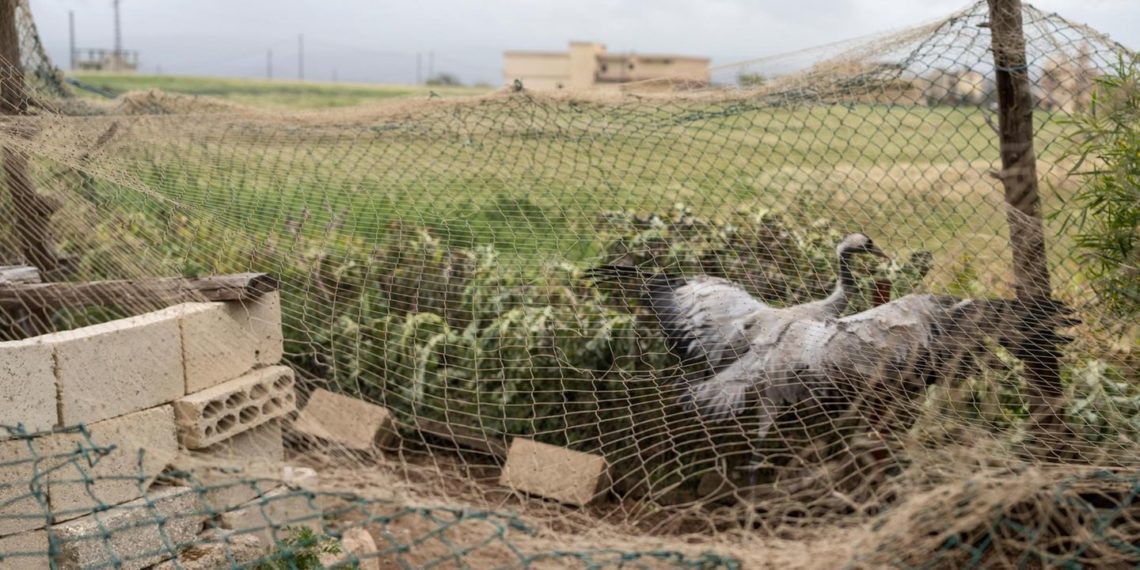
The fate of migratory birds: storks, cranes and eagles become featherweight prey in Lebanon
The migratory birds are coming. And the hunters are already waiting
Migratory birds from half of Europe fly over Lebanon twice a year, where hunters shoot them, catch them in nets and mutilate them. How can species be protected in a heavily armed country that has lost its sense of community?
They are coming. Flocks of storks glide over the valley, hundreds of birds. And they are expected. It starts to rain. The clouds sink lower and lower, forcing the storks down. They land in treetops, on the meadows and hills around the village of Miryata. Right at the feet of their enemies.
Shots ring out from all sides of the valley at the same time. Young men in jeans and hoodies fire shotguns into the groups of birds. Storks flutter up in panic, fly a little, then land again. The men jump into a box truck and chase after the birds. More and more cars and jeeps are racing up the hills and along the edges of fields. An old man in a wheelchair and children from the village watch the spectacle and see the storks tumbling from the sky.

Shirine Raffoul heads the Lebanese anti-poaching unit APU. She gave up her job as a flight attendant to do this. Was formerly She herself is a hunter, today she protects the animals on their journey. “When I lie in bed after a mission, I can still see the birds flying by in front of my closed eyes,” she says.
Shirine Raffoul leitet die libanesische Anti-Wilderer- Einheit APU. Dafür hat sie ihren Job als Flugbegleiterin aufgegeben. Früher war sie selbst Jägerin, heute beschützt sie die Tiere auf ihrer Reise. »Wenn ich nach einem Einsatz im Bett liege, dann sehe ich die Vögel noch vor meinen geschlossenen Augen vorbeiziehen«, sagt sie.

Adonis Khatib from the Society for the Protection of nature in Lebanon SPNL, the parent organization of the anti-poaching unit APU. He drives the car, with a GoPro camera on his left wrist and a cell phone in his right.
Adonis Khatib vom libanesischen Naturschutzbund SPNL, der Mutterorganisation der Anti-Wilderer- Einheit APU. Er steuert den Wagen, mit GoPro-Kamera am linken Handgelenk und Handy in der Rechten.
Chadi Saad is Homat Al-Hima, a guardian of the sanctuary. The title is as old as the country itself and is based on a conservation concept that is deeply anchored in Islamic tradition. The the Society for the Protection of nature in Lebanon SPNL wants revive it.
Chadi Saad ist Homat Al-Hima, ein Wächter des Schutzgebiets. Der Titel ist so alt wie das Land selbst und basiert auf einem Naturschutzkonzept, das tief verankert ist in der islamischen Tradition. Die libanesische Naturschutz- gesellschaft SPNL will
es wiederbeleben.
Continue to read from Original source:
Download PDF file in German Language
